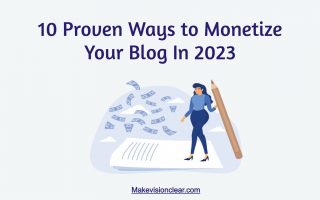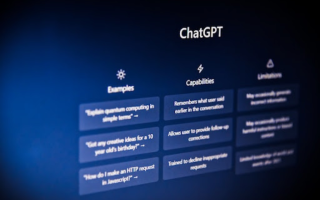Demand generation is a marketing strategy focused on creating demand for products and services. It is an approach used by businesses to generate interest in their offerings and convert prospects into paying customers. The goal of demand generation is to create awareness, engage potential buyers, and ultimately increase sales.
Table of Contents
Definition of Demand Generation Strategy
A demand generation strategy is a comprehensive plan that combines tactics such as content creation, email marketing campaigns, social media outreach, online advertising, search engine optimization (SEO), lead nurturing programs and more to attract qualified leads who are likely to become customers. By utilizing these strategies together you can effectively drive growth for your business by targeting the right audience with the right message at the right time.

See also: Get Your Website Noticed With These Powerful SEO Hacks
Overview of Lead Conversion Benefits
Lead conversion is a key component of demand generation. It’s the process of turning prospects into paying customers by providing them with an irresistible offer or incentive to purchase your product or service. Lead conversion can help you grow your business, increase sales and build customer loyalty.
Analyzing Your Market and Target Audience
Before you start creating a demand generation strategy, it’s important to understand who your target audience is and what their needs are. Analyzing the market will help you determine which channels are most effective for reaching potential buyers, as well as how best to craft messages that resonate with them.
Researching Your Industry and Competitors
In addition to understanding your target audience, researching industry trends and keeping an eye on your competitors can help you create an effective demand generation strategy. Knowing what other companies in your space are doing will give you insight into the strategies they’re using and how successful they are. You can also use this information to identify areas where you may have a competitive advantage over them.
Identifying Your Ideal Customer Profile (ICP)
Once you have a better understanding of your target audience and industry, it’s time to define your ideal customer profile (ICP). An ICP is a detailed description of the type of customer that would be most profitable for your business. It should include demographic information such as age, income level, location, education level, buying habits and more. Defining an ICP will help you narrow down your target audience and create a more effective demand generation strategy.
Crafting a Buyer Persona for Each Segment
Once you’ve identified your ICP, the next step is to create buyer personas for each segment of your target audience. A buyer persona is an imaginary customer that embodies the characteristics of each segment. By creating detailed profiles for each persona, you can tailor content and messaging to better resonate with them.
What are the 4 Stages of Demand Generation?
Before we dive into the 4 stages of demand generation, let’s first define what it is. Demand generation is a marketing strategy that focuses on creating interest and awareness in your product or service, with the ultimate goal of generating more leads and driving revenue. This can involve a variety of tactics, such as content marketing, social media advertising, email marketing, and more.
Stage 1: Awareness
The first stage of demand generation is creating awareness. This is where you aim to get your brand and product in front of potential customers who may not even know you exist. This stage is all about building brand recognition and creating interest in your product or service. You can achieve this through a variety of tactics, including social media advertising, content marketing, influencer marketing, and more. The key is to create content that resonates with your target audience and offers value. Read this 8 content marketing metrics you should know about it.
Stage 2: Interest
Once you have created awareness, the next stage is to build interest. This is where you aim to convert those who are aware of your brand into potential customers. At this stage, it’s important to provide more detailed information about your product or service and highlight how it can solve your audience’s pain points. You can do this through a variety of tactics, including email marketing, webinars, product demos, and more.
Stage 3: Consideration
The consideration stage is all about helping potential customers evaluate whether your product or service is the right fit for them. This is where you provide detailed information about the features, benefits, and pricing of your offering. You may also want to provide social proof in the form of customer reviews and testimonials to help build trust and credibility. At this stage, it’s important to focus on building a relationship with your potential customers and addressing any objections or concerns they may have.
Stage 4: Conversion
The final stage of demand generation is conversion. This is where you aim to turn potential customers into paying customers. At this stage, it’s important to have a clear and compelling call-to-action that encourages your audience to take the next step. This could be anything from filling out a lead form to making a purchase. It’s also important to make the conversion process as smooth and easy as possible, with minimal friction.
How to Build Demand Generation Strategies
- Understanding Your Target Audience
Before you can build effective demand generation strategies, you need to understand your target audience. Who are your ideal customers? What are their pain points and challenges? What motivates them to make a purchase?
By answering these questions, you can create buyer personas that represent your ideal customers. These personas should inform every aspect of your demand generation strategies, from the content you create to the channels you use to promote it.
- Develop buyer personas
Once you have identified your target audience, develop buyer personas that represent your ideal customers. This will help you create more personalized and targeted marketing messages that resonate with your audience.
- Creating Compelling Content
One of the most effective demand generation strategies is creating high-quality content that resonates with your target audience. Whether it’s blog posts, videos, social media posts, or webinars, your content should provide value and help solve your customers’ problems.
To create compelling content, you need to understand your customers’ pain points and challenges. What are the most common questions they ask? What are the most common objections they raise? By addressing these issues in your content, you can establish yourself as an authority in your industry and build trust with your audience.
To ensure your content reaches your target audience, you need to optimize it for search engines. Conduct keyword research to identify relevant keywords and use them throughout your content, including in your headings, meta descriptions, and alt tags. Also read this five important search engine optimization ranking factors.
- Leverage social media
Social media platforms are great for promoting your content and engaging with your audience. Identify the platforms your target audience uses most and create a social media strategy that includes regular posting, engagement, and paid advertising. Read the future of social media marketing to drive growth.
- Use email marketing
Email marketing is a powerful tool for nurturing leads and converting them into customers. Create targeted email campaigns that provide value to your subscribers and encourage them to take action.
- Measure and optimize
To ensure your demand generation strategies are working effectively, you need to track and measure their performance regularly. Use analytics tools to monitor your website traffic, conversion rates, and other key metrics, and make adjustments as needed.
See also: What Is the Average Conversion Rate & How to Optimize It?
Demand Generation vs Lead Generation
Demand generation and lead generation are two distinct marketing strategies that serve different purposes. Lead generation is all about collecting contact information from potential customers, while demand generation is about creating awareness and interest in your product or service.
To put it simply, demand generation is about creating interest and excitement around your product or service, while lead generation is about identifying potential customers who are interested in what you have to offer.
Let me give you an example to make it clearer. Imagine you’re a company that sells organic dog food. Your demand generation efforts might include creating social media posts and blog articles that educate people about the benefits of feeding their pets organic food, and running ads that promote your brand and its mission.
Your lead generation efforts, on the other hand, would involve getting people to sign up for your email list or follow your social media accounts so that you can continue to engage with them and eventually convert them into customers. You might offer a free sample of your dog food or a discount code to incentivize sign-ups.
So, to sum it up, lead generation is about capturing contact information from potential customers, while demand generation is about creating interest and awareness in your product or service. Both are important strategies for any business, but they serve different purposes and require different tactics.
Now that you have a better understanding of who you are targeting, it’s time to develop an effective demand generation plan. This should include setting goals, objectives and strategies, choosing the right channels for content distribution, measuring results, and establishing relevant key performance indicators (KPI’s).
A. Establish Relevant Key Performance Indicators (KPI’s)
Key performance indicators, or KPI’s, are metrics that measure the success of your demand generation strategy. These could include website visits, social media engagement, lead conversion rate, customer acquisition cost and more. By monitoring these metrics regularly you can ensure that your efforts are driving the desired results.
B. Setting Goals, Objectives, and Strategies
Once you have established relevant KPI’s it is time to set goals and objectives for each one. This will help you focus on what needs to be accomplished in order to achieve success with your demand generation plan.
It’s also important to develop strategies for each goal and objective. This could include creating content, optimizing website pages, running email campaigns, launching social media ads and more.
C. Choosing the Right Channels for Content Distribution
Choosing the right channels for content distribution is an important part of any demand generation strategy. Different channels have different benefits and drawbacks so it is important to choose ones that will be most effective at reaching your target audience.
Some popular options include blogs, email marketing campaigns, social media platforms such as Facebook or Twitter, video hosting sites like YouTube or Vimeo and paid search engine advertising such as Google Ads or Bing Ads.
D. Measuring Results
Once you have launched your demand generation plan, it’s important to measure the results. This will allow you to adjust your strategy as needed and ensure that it is having the desired effect. Analyzing metrics such as website visits, lead conversion rate, customer acquisition cost and more can help you determine which tactics are working best so you can focus on those going forward.
Conclusion
Demand generation is a powerful marketing strategy for generating leads and converting them into paying customers. By implementing an effective plan that includes setting goals, choosing the right channels for content distribution and measuring results, you can maximize your lead conversion rate and grow your business.
Why is a demand generation plan important?
A demand generation plan is important because it helps businesses identify their target audience, create engaging content, distribute their content, and measure their results. With a well-executed plan in place, businesses can attract more leads, generate more revenue, and grow their business.
How do I identify my target audience?
You can identify your target audience by conducting market research, analyzing customer data, and creating buyer personas. You need to understand who your ideal customer is, what their pain points are, and what motivates them to buy.
What types of content can I create for my demand generation plan?
You can create various types of content such as blog posts, videos, infographics, social media posts, and e-books.
How do I measure the success of my demand generation plan?
You can measure the success of your demand generation plan by tracking your metrics such as website traffic, leads, conversions, and revenue. Use analytics tools like Google Analytics and Ahrefs to track your results and make data-driven decisions.
What is a demand generation plan?
A demand generation plan is a marketing strategy that aims to attract new leads, generate interest in your products or services, and convert those leads into customers.



